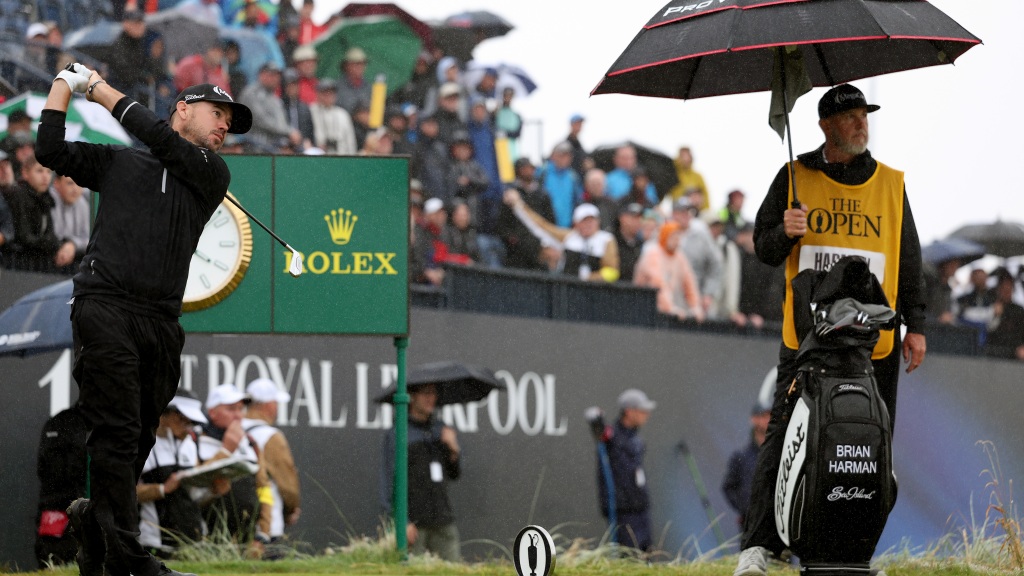HOYLAKE, England — Sunday afternoon at Royal Liverpool brought weather as persistently disagreeable as a drunk at a Saturday night bar, but only for competitors. For spectators, it was a minor annoyance. And for hardcore fans, it was a welcome 11th-hour arrival of authentic Open conditions, weather in which you’d think twice about leaving even Brandel Chamblee outdoors.
As morning mist turned to steady rain, it summoned the holy trinity of attributes that have been required on foul days at golf’s oldest major since Old Tom Morris first wrung out his tweed suit: attitude, aptitude and fortitude.
Attitude: a positive mindset before a shot is struck, a determination to push forward and not retrench.
Aptitude: learning from and adapting to varying conditions; forgetting stock shots and yardages and letting the inner artist – heck, the inner survivor – take over.
Fortitude: gut punches are coming, whether through missed putts, crappy bounces or ill-timed gusts; absorb them, move on.
Each individual trait is necessary, but useless without the other two.
If these elements were fed into Chat GPT with a request for an identikit image of someone who embodies them, it might generate a weathered face with an unmistakeable flintiness, and with a gleam in the eye. In short, you’d be looking at Tom Watson.
Watson says he didn’t truly appreciate links golf until 1981. It speaks volumes about his attitude, aptitude and fortitude that he’d already won three Claret Jugs by that time – more than the two he added after he learned to love the ground game. His resolve didn’t just show up in the British Isles. It produced one of the greatest rounds in golf history, though one often overlooked. In the rain-soaked second round of the 1979 Memorial, with a wind chill hovering at 13 degrees, 42 of 105 players didn’t break 80. One didn’t crack 90. Watson shot 69, missing only two greens and making no bogeys.
On Sunday, I reached out to Watson to ask how he approached final rounds at the Open in detestable weather. “Frankly, bad weather reduced the number of people who could win,” he said. “Some just couldn’t deal with and adjust to the bad conditions.”
That’s the essence of a hall of famer, and the greatest links golfer of the last half-century. While others looked despairingly at the sky, his eyes never left the prize.
As the final round trudged on through growing puddles at Royal Liverpool, there was a degree of correlation between a…
..
Click Here to Read the Full Original Article at Golfweek…
